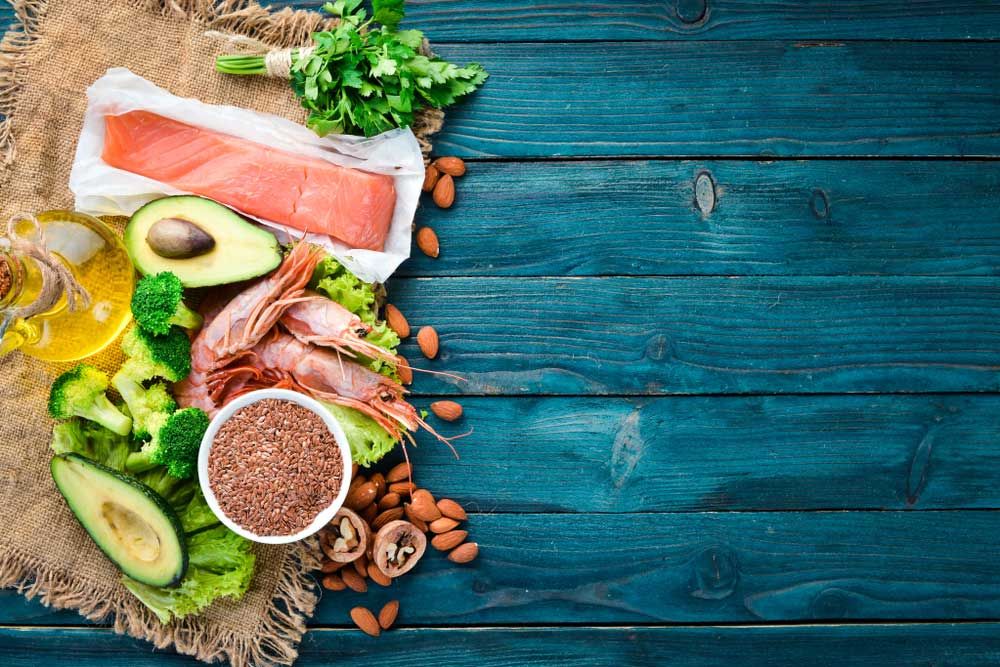Dietary fat has gotten a bad reputation over the past decades. Low-fat diets became the trend, and we became extremely concerned about making sure we limit the amount of dietary fat intake as much as we can to reduce “bad” cholesterol, prevent heart disease, and decrease body fat.
However, according to Harvard Health Publishing, the “all fat is bad for you” message was wrong. Although certain types of fat and the fat-like substance cholesterol may play a role in cancer, diabetes, heart disease, and obesity, fat is as essential as carbohydrates and protein are in fueling your body with energy.
Certain fats actually help us to absorb certain nutrients, especially fat-soluble vitamins (vitamin A, D, E, and K) as well as some minerals.
Dietary fats also support cell growth and help produce essential hormones. They provide the building blocks for cell membranes and are needed for several other bodily functions.
By learning the difference between healthy and unhealthy fats and the way to integrate additional healthy fats into your diet, you’ll be able to determine which fats to avoid, and which to eat in moderation for good long-term health.
Bad fats include industrial-made trans fats, while good fats include monounsaturated and polyunsaturated fats. Saturated fats fall somewhere in the middle and should be consumed in moderation.
What are bad fats?
Trans fat
Trans fat is most harmful to your health. Most food items that contain these types of fat are solid at room temperature. Examples are:
- Butter
- Commercially baked goods such as cookies, crackers, and doughnuts
- Creamers
- Fast food
- Margarine
- Shortening
Trans fat increases the risk of developing heart disease, stroke, and type 2 diabetes. It may even affect our mood; reportedly, a study done at the University of California, San Diego found that men under age 45 who consumed foods rich in trans-fat exhibited decreased memory, worsened moods, and more aggressive behaviors.
Saturated fat
Most saturated fats are animal fats found in high-fat dairy products and meats. Examples are:
- Dark chicken meat and the skin of poultry
- Eggs
- Fatty cuts of beef, pork, and lamb
- High-fat dairy foods such as butter, cheese, ice cream, sour cream, and whole milk
- Lard
- Tropical oils such as cocoa butter, coconut oil, and palm oil
Saturated fat is not the demon it was believed to be. Foods that were once avoided like eggs, whole milk, and butter can be incorporated into a healthy diet in moderation. Saturated fats play a major role in boosting the health of the immune system. They constitute at least 50% of the cell membranes, giving them necessary stiffness and integrity so they can function properly. However, eating too much saturated fat can increase blood cholesterol levels and low-density lipoprotein (LDL) levels.
What are good fats?
Healthy fats are liquid at room temperature and are found mainly in fish, nuts, seeds, and vegetables.
Monounsaturated fat
Monounsaturated fats are found in high concentrations in:
- Avocados
- Nut butter (trans-fat-free) such as almond butter and peanut butter
- Nuts such as almonds, cashews, peanuts, and pistachios
- Olive oil
- Olives (black and green)
Polyunsaturated fat
Polyunsaturated fats are found in high concentrations in:
- Oils such as corn, safflower, sunflower, flaxseed, and soybean oils
- Pumpkin, sesame, and sunflower seeds
- Walnuts
Omega-3 and omega-6 fatty acids
Omega-3 and omega-6 fatty acids are a group of polyunsaturated fats. They are important components of cell membranes and are precursors to several other substances in our bodies including those involved in inflammatory responses and in regulating blood pressure.
Our body is able to produce all types of fatty acids except linoleic acid (LA), an omega-6 fatty acid, and alpha-linolenic acid (ALA), an omega-3 fatty acid. Since these two types of fatty acids can only be consumed from our diet – our bodies are not able to produce them – they are called essential fatty acids.
Good sources of omega-3 fatty acids are:
- Brussel sprouts
- Chia seeds,
- Tuna, salmon, sardines, herring, and mackerel.
- Walnuts
Good sources of omega-6 fatty acids are:
- Flaxseeds and flaxseed oil,
- Hempseeds and hempseed oil
- Processed commercial vegetable oils, including canola, corn, safflower, soybean, and sunflower safflower oils
- Pumpkin seeds
- Safflower oil
- Soybean oil
- Sunflower oil
Recent research has revealed that too much omega-6 in the diet creates an imbalance that can result in increased tendency to form blood clots and inflammation, high blood pressure, irritation of the digestive tract, depressed immune function, cell proliferation, and weight gain.
A proper omega-3 to omega-6 ratio can be achieved by consuming at least twice the amount of omega-3s compared to omega-6.
Fat is an essential nutrient for our bodies. It provides energy and helps our bodies to absorb certain vitamins from foods. However, all fats are not created equal, and our choice of dietary fats is one of great importance to our health. Choose the fats you eat with care!

